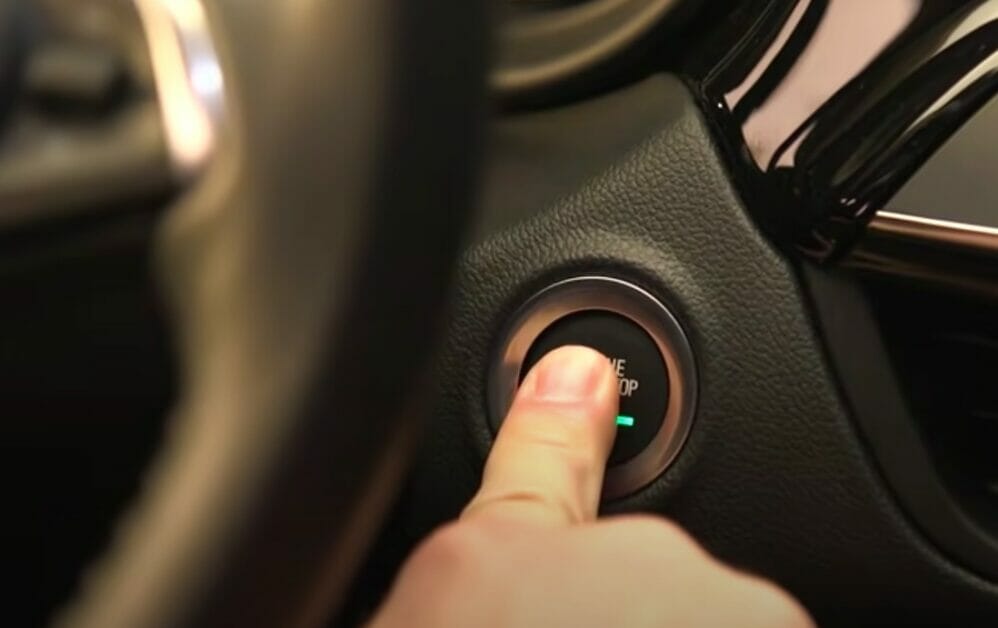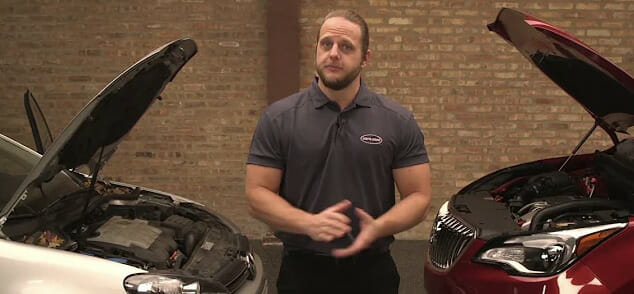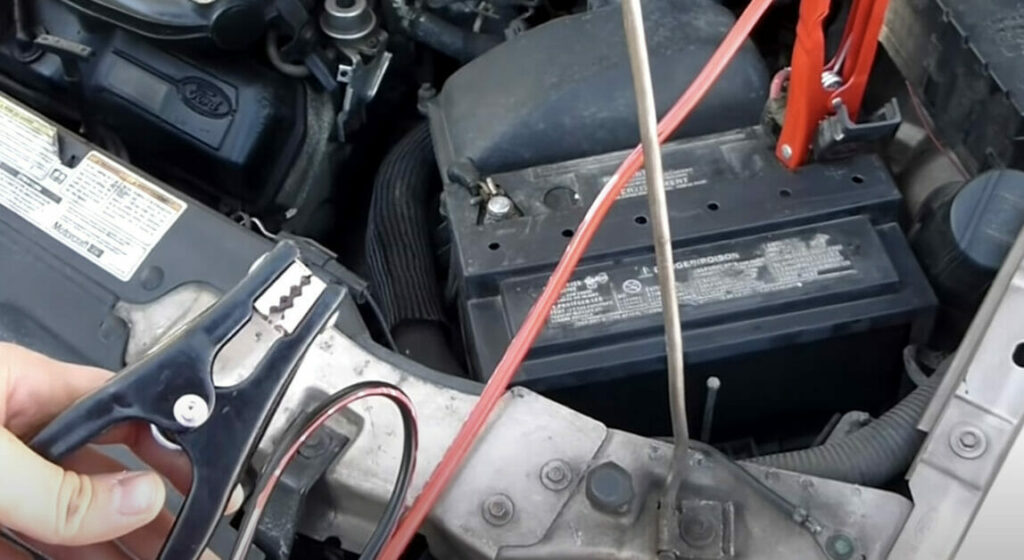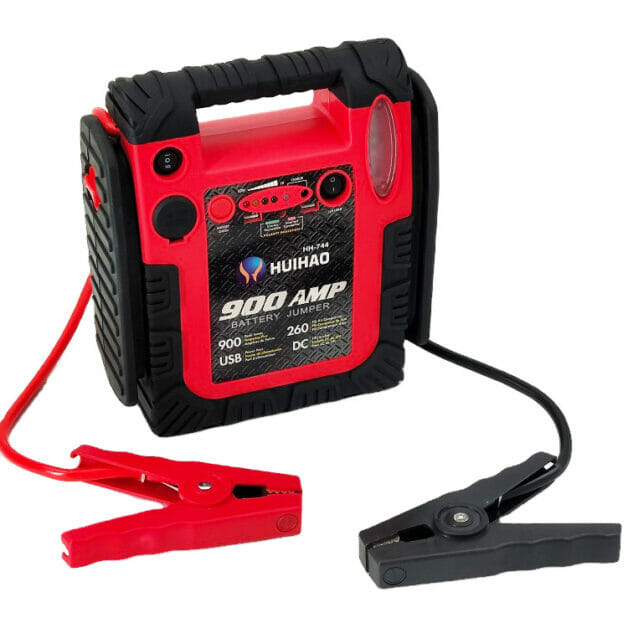How Many Times Can You Jump a Car Battery? (Guide)

Drivers may wonder how frequent jump-starting affects their vehicle’s battery. More importantly, however, you should be concerned about and investigate why you have to jump-start so often in the first place.
As long as the battery is not weak, too old, or damaged, You can jump-start a car many times. Its battery can withstand it frequently, as it only causes a little stress. However, it shouldn’t be attempted more than 3 to 5 times at a stretch, and you should allow the car to run for a couple of minutes before disconnecting the jumper cable.
But if you have to do this too often, you should investigate what is draining the battery and whether the battery needs replacing.
I also mention some safety precautions and give some jump-starting tips below.
Frequent Jump-Starting

Although jump-starting your car frequently is generally safe, I don’t recommend doing so very often.
So, how many times can you jump-start a car battery? Technically, you can jump-start a car battery as many times as you need. The battery should be able to withstand frequent jump-starts without issue.
But it’s probably too much if you jump-start more than once a week, two, or thrice a month. It would be best not to rely on having to jump-start this often. Also, I don’t recommend doing this indefinitely because you shouldn’t always need to jump-start your car.
If you’re having to do this too often, you should ask yourself:
- How does frequent jump-starting affect the battery’s long-term condition?
- Why does the car need frequent jump-starting?
- What can you do to avoid frequent jump-starting?
- When will a jump-start not work?
We’ll consider each of them below.
Impact on the Battery
Jump-starting a car only causes a little stress on its battery.
Normally, you can safely jump-start without experiencing any negative impact on the battery. It means no more than 3 to 5 consecutive jump starts.
However, the long-term impact may not be good if the consecutive jump-starts are more or if it’s too frequent overall. It will weaken over time. If so, investigate why the car needs to be jump-started so often.
Why the Car Needs a Jump Start

If your car needs jump-starting frequently, try to find and fix the underlying cause.
If the battery is drained or weak, it might need jump-starting. If you check the battery’s voltage, it will probably be below 12 volts, whereas it should be around 12.5-13.5 or 14 volts.
It will drain even quicker if the battery is weak or nearing its end.
If the jump-starting fails to start the car, the battery is probably defective or dead and needs replacing.
Avoiding Frequent Jump-Starting
To avoid frequent jump-starting, check the battery’s condition.
It may be weak and need replacing. Otherwise, some heavy appliance or device could be draining it quicker than the alternator can charge it.
If you’re sure there is no such device, inspect the battery:
- Does the battery have enough water?
- Is the battery older than its expected lifetime?
- Are the battery’s terminals corroded?
- Is the battery physically damaged?
Jump-Start Safety: The Essentials

Getting your car jump-started correctly is key to avoiding damage to your jumper cables, battery, and alternator. Let me walk you through the dos and don’ts to keep everything smooth and safe.
Things to Watch Out For
First, make sure you’re connecting those jump-start cables correctly. Getting it wrong can cause serious heat and potentially harm your battery with unwanted gases or even a short circuit.
And trust me, you don’t want to see your jumper cables melting or burning because they couldn’t handle the current.
Also, it’s super important to turn off everything else in the car. If anything else runs directly off the battery—even the lights or the car alarm—it could send a power surge through the car’s alternator. Too much surge? You’re looking at overheating and damage.
Here are a few more no-gos:
- Avoid bending over the batteries.
- No smoking during the jump-start process.
- Don’t try to jump-start if your battery’s got frozen fluid inside. It’s a recipe for a bad day.
- And steer clear of trying to jump a cracked or leaking battery.
My Top Tips for a Smooth Jump-Start
Now for the good part, how to get that jump-start right:
- Make sure to connect those positive to positive and negative to negative terminals. If you’ve got a jump-starter machine, that’s a great option too.
- Keep those cars from touching. They should be close, but not that close.
- Wait to start the target car’s engine until you’ve turned off any extra electrical loads and secured those cables.
- Don’t overdo it with the cranking—three times is your max.
- After a successful jump, don’t hit the road immediately. Let it run for a bit to recharge that battery.
- Unsure? Your car’s manual is your best friend here. Please consult it for jump-starting specifics.
- Gear up for safety with goggles and rubber gloves.
- And here’s a heads-up: if you need to jump-start often, especially after short drives, it might be time for a new battery.
Remember, folks, a little care goes a long way in keeping your car running smoothly and safely. Stick to these tips, and you’ll be ready for a hassle-free jump-start!
Battery Maintenance Tips to Avoid Frequent Jump-Starts
Keeping your car’s battery in top shape is crucial to avoid those unexpected jump-starts. Let me break down some key maintenance tips in an easy-to-follow table.
| Maintenance Tip | Why It’s Important | How To Do It |
|---|---|---|
| Regular Battery Testing | To catch issues before they leave you stranded. | Use a multimeter monthly to check voltage and health. |
| Keeping Terminals Clean | Dirty or corroded terminals can cause poor connection and battery drain. | Clean terminals with a brush and baking soda-water solution. |
| Proper Vehicle Storage | Long periods of inactivity can lead to battery drain. | Disconnect the battery or use a trickle charger. |
| Checking for Electrical Leaks | Small drains, like a glove box light staying on, can empty your battery over time. | Use a test light or multimeter to check for unexpected drains. |
| Ensure Tight Connections | Loose connections can mimic a dead battery situation. | Regularly check and tighten cable clamps to the terminals. |
| Battery Insulation | Extreme temperatures can affect battery performance. | Use a battery insulation kit to protect it from heat and cold. |
Remember, a little TLC for your battery can go a long way in keeping your car ready to roll. With these tips, stay powered up and avoid the jump-start jive!
Frequently Asked Questions
- Can I Jump-Start My Car In The Snow?
- Yes, you can, but ensure your cables are flexible and not frozen, and check the battery isn’t frozen either.
- Is Jump-Starting A Hybrid The Same?
- Not quite. Hybrids have a 12-volt battery, so you can jump-start but never attempt to jump the high-voltage battery.
- Can Frequent Jump-Starting Damage My Car?
- Repeated jump-starting can strain the battery and electrical system but is unlikely to cause immediate damage if done correctly.
- How Long Should I Drive After Jump-Starting?
- Drive for at least 20-30 minutes to allow the battery to recharge adequately.
- Will Jump-Starting Work On A Dead Battery?
- If the battery is completely dead, it might not hold a charge, indicating it’s time for a replacement.
- Can Cold Weather Kill My Battery?
- Yes, extreme cold can reduce battery efficiency and prevent it from holding a charge.
- What Safety Gear Should I Use When Jump-Starting?
- Wear protective gloves and goggles to protect against sparks and battery acid.
- Jump-Starting In Rain: Safe Or Not?
- It’s safe, but ensure connections are dry and you’re not standing in water for safety.
- Why Won’t My Car Start Even With A Jump?
- It could be a more significant issue, like a faulty starter or alternator, not just the battery.
Resources
Organizations
- National Highway Traffic Safety Administration (NHTSA) – https://www.nhtsa.gov/
- American Automobile Association (AAA) – https://www.aaa.com/
Books
- “The Complete Guide to Auto Body Repair, 2nd Edition” by Dennis W. Parks – https://books.google.com/books/about/The_Complete_Guide_to_Auto_Body_Repair.html?id=9p4TYnKbYy8C
- “Automotive Wiring and Electrical Systems” by Tony Candela – https://books.google.com/books/about/Automotive_Wiring_and_Electrical_Systems.html?id=myi2QmV5RmUC
Websites Resources
- Cars.com – https://www.cars.com/
- Green Car Reports – https://greencarreports.com/
Video References
Cars.com
ChrisFix
